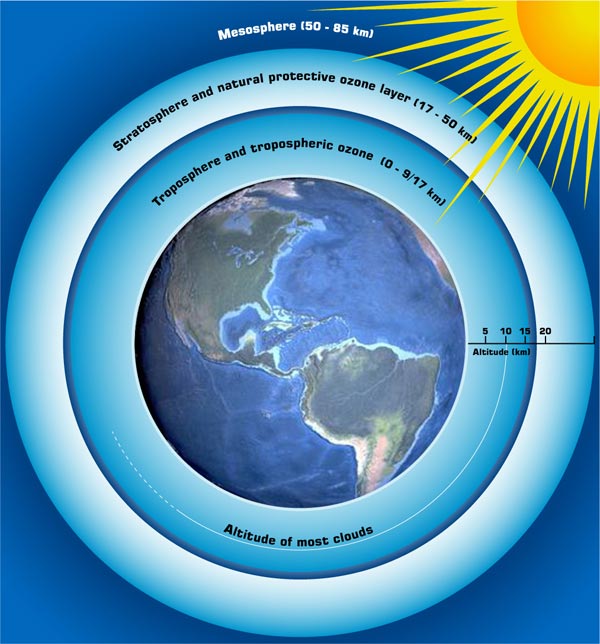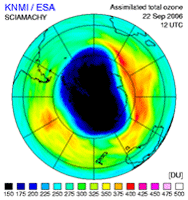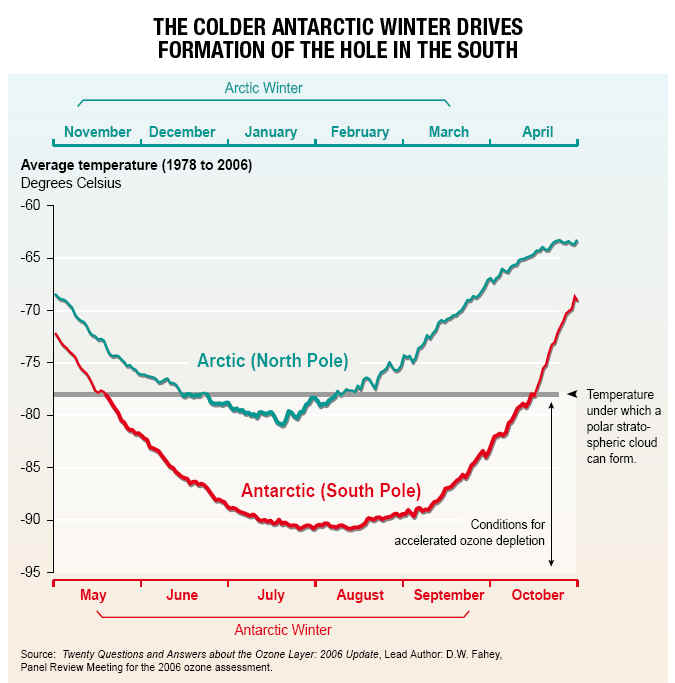|
The Ozone Layer
The ozone layer is a layer in Earth's atmosphere which contains relatively high concentrations of ozone (O3). This layer absorbs 97-99% of the sun's high frequency ultraviolet light, which is potentially damaging to life on earth. Over 90% of ozone in earth's atmosphere is present here "Relatively high" means a few parts per million—much higher than the concentrations in the lower atmosphere but still small compared to the main components of the atmosphere. It is mainly located in the lower portion of the stratosphere from approximately 15 km to 35 km above Earth's surface, though the thickness varies seasonally and geographically. A dobson unit is the most basic measure used in ozone research.One Dobson Unit (DU) is defined to be 0.01 mm thickness at STP (standard temperature and pressure). Ozone layer thickness is expressed in terms of Dobson units, which measure what its physical thickness would be if compressed in the Earth's atmosphere. In those terms, it's very thin indeed. A normal range is 300 to 500 Dobson units, which translates to an eighth of an inch-basically two stacked pennies.
In space, it's best not to envision the ozone layer as a distinct, measurable band. Instead, think of it in terms of parts per million concentrations in the stratosphere (the layer six to 30 miles above the Earth's surface).
The unit is named after G.M.B. Dobson, one of the first scientists to investigate atmospheric ozone . A thinning ozone layer leads to a number of serious health risks for humans. It causes greater incidences of skin cancer and cataract of the eye, with children being particularly vulnerable. There are also serious impacts for biodiversity. Increased UV-B rays reduce levels of plankton in the oceans and subsequently diminish fish stocks. It can also have adverse effects on plant growth, thus reducing agricultural productivity. Another negative effect is the reduced lifespan of certain materials.
Severe depletion of the Antarctic ozone layer was first observed in the early 1980s. The international response embodied in the Montreal Protocol. Today 191 countries worldwide have signed the Montreal Protocol which is widely regarded as the most successful Multinational Environmental Agreement ever reached to date. Furthermore the phasing out of ozone depleting substances (ODS) has helped to fight climate change since many ODS are also powerful greenhouse gases.
HISTORY OF THE OZONE LAYER
Credit: Bob Keesee The Upper Atmosphere A ATM 101N University Of Albany, NASA, EPA, Environment Canada |








